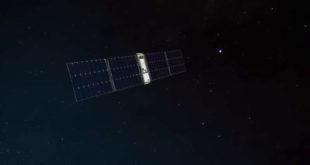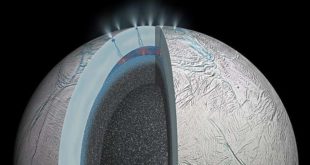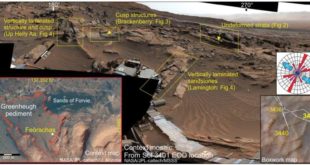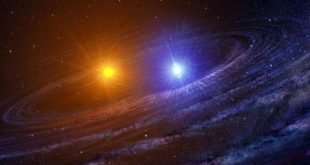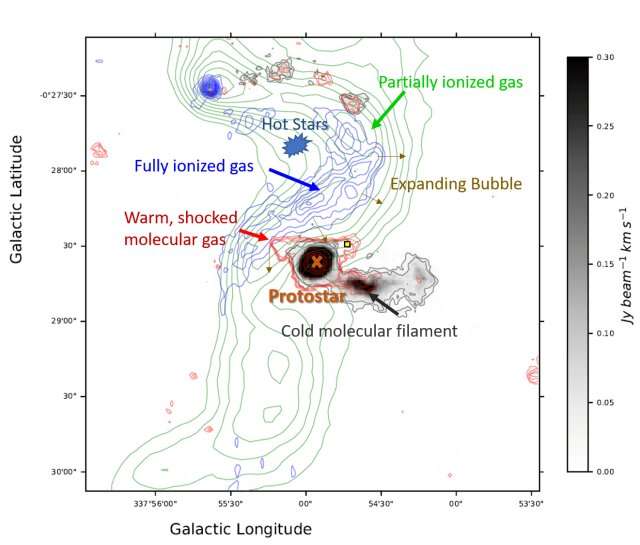
Deep in the depths of our galactic ocean, astronomers have observed triggered star formation in the Nessie Nebula.
A gaseous strand of cosmic gas and dust forms the core of the sinuous “Nessie” filament, an infrared dark cloud (IRDC). This cold, dense, opaque cloud is primed to form new stars. The gravity in this dense filament primes it to collapse into stars. If a hot star is born in the filament, it forms an expanding bubble that can collide with the filament and send it over the edge to form a new star. The first luminous star is the first domino falling, setting off a chain reaction.
As new stars form along the filament, they can trigger subsequent star formation in sequence that propagates along the filament. The energy produced by the new stars forms new hot, expanding bubbles, colliding with pockets of cold gas in the filament, pushing the filaments gas at the collision site over the edge to trigger even more star formation, falling like dominoes down the line.
Using data from SOFIA, the Australia Telescope Compact Array, and the Mopra Telescope, an international team of astronomers have evidence of this triggered star formation caused by a bubble-filament interaction.
This phenomenon was revealed by observing the most luminous protostar in the region, AGAL337.916-00.477. This newly formed star was located precisely at the intersection between an expanding HII bubble and the IRDC filament.

This tear-dropped shaped bubble along Nessie’s western edge is the location of high energy star clusters, compact H II regions, and, tellingly, a luminous young protostar. Both ammonia (3,3) (observed with the Australia Telescope Compact Array) and SiO 2-1 emission (observed with the Mopra Telescope) show emission peaks exactly coincident with the luminous protostar. Both the ammonia (3,3) and the SiO emission are unambiguous signs of the bubble slamming into the filament.
Adds Jim Jackson, Director of the Green Bank Observatory, and a lead author on this research, “We’ve known for some time that Nessie is the birthplace of stars. We’ve wondered about whether an older generation of stars can trigger the birth of new stars in a filamentary cloud. With these data, we can see the triggering process in action. ”
This news was shared at a press conference on Tuesday, June 6, at the 242nd summer meeting of the American Astronomical Society.
Provided by
Green Bank Observatory
Citation:
Core of the Nessie Nebula primed to form new stars, say astronomers (2023, June 7)
retrieved 11 June 2023
from
This document is subject to copyright. Apart from any fair dealing for the purpose of private study or research, no
part may be reproduced without the written permission. The content is provided for information purposes only.
 Innovation Discoveries Latest Scientific Discoveries in Innovation
Innovation Discoveries Latest Scientific Discoveries in Innovation
